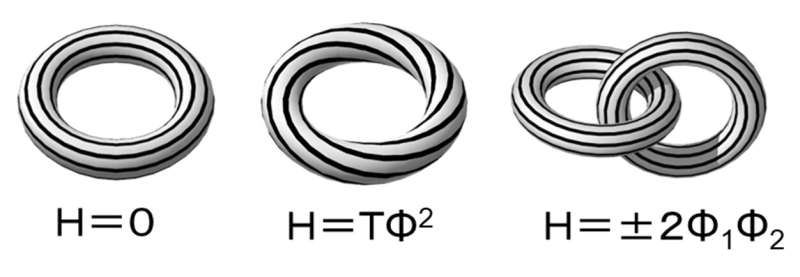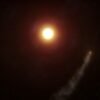The sun, the nearest star to us, is not as quiet as it seems, and multifarious solar activities happen every hour and moment. The occurrence of these phenomena is accompanied by the accumulation and release of energy, and is related to the solar magnetic fields.
Magnetic helicity can quantitatively characterize the topology properties and nonpotentiality of the solar magnetic field. Studying the accumulation and transportation of magnetic helicity may help to understand the process of energy transmission from generation in solar interior to accumulation in corona.
A research team from the National Astronomical Observatories of the Chinese Academy of Sciences (NAOC) computed the accumulated magnetic helicity through the photosphere (Hmp) and the instantaneous relative magnetic helicity in the corona (Hmc) by the helicity flux integration method and the finite volume method, respectively.
This study was published in The Astrophysical Journal.
The researchers found that the consistency of Hmc and Hmp was partly dependent on the resolution of the magnetograms and the calculation methods.
The coronal magnetic fields are obtained from photospheric magnetic fields with the help of the nonlinear force-free field (NLFFF) model. This work evaluates the merit of NLFFF model, and provides a reference for the subsequent comparison research of different magnetic helicities.

Fig. 2 Sample of Magnetic Helicity, in which Φ is magnetic flux and T is twist number. © Takashi Sakurai
“The study is credited to the excellent data from the Solar Magnetic Field Telescope, which is independently developed by Chinese scientists and has been steadily operating for nearly 40 years,” said Wang Quan from NAOC, first author of the study.
“Our research will help to better understand the future observations from the Full-disk MagnetoGraph, the first Chinese space magnetograph, which is a main payload on the scientific satellite ASO-S,” said Dr. Yang Shangbin from NAOC, corresponding author of the study.
“In the future, we will expand this method to the dissipation of helicity during solar eruptions,” said Prof. Zhang Mei, the Chief Scientist of Huairou Solar Observing Station (HSOS).
HSOS is one of the key stations of NAOC. It was founded by academician AI Guoxiang in 1984 and is located on an island near the north bank of the Huairou Reservoir. The main scientific objective of the station is to measure and study the solar magnetic and velocity fields at various altitudes of the solar atmosphere.
More information:
Quan Wang et al, Comparison of Two Methods for Calculating Magnetic Helicity in the Solar Corona, The Astrophysical Journal (2022). DOI: 10.3847/1538-4357/ac5593
Provided by
Chinese Academy of Sciences
Citation:
Exploring the mystery of magnetic helicity transportation from solar interior to corona (2022, July 12)


